Nuclear and Subnuclear Physics
PARTICLE PHYSICS and ACCELERATORS
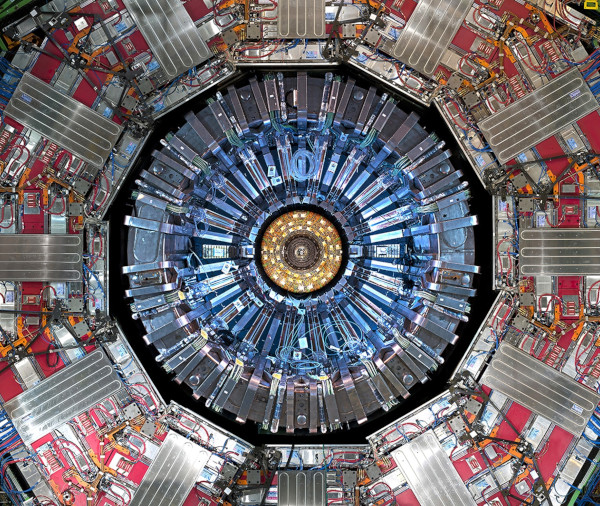
The Compact Muon Solenoid (CMS) is an experiment of the Large Hadron Collider (LHC) at CERN in Geneva. The CMS detector is optimized to study the phenomenology of collisions between high-energy protons produced by LHC, measuring many processes envisaged by the theory of the Standard Model and searching for new physics. In 2012 CMS announced the discovery of the Higgs boson and since then began a large program of measures of the properties of this particle.
The Florence group is involved with leading roles both in the analysis of the data collected in the experiment and in the design and maintenance of the detectors. In particular, the researchers of CMS Firenze study the properties of the Higgs boson as decays in W bosons pairs, by means of neural networks and machine learning techniques and contribute to the development of an innovative silicon pixel detector. This detector will be installed in a few years to enhance CMS in view of the "high luminosity" phase of LHC (HL-LHC), which will make possible to search for new fundamental processes and improve precision measurements related to the Higgs boson.
Contact person: Giacomo Sguazzoni (at) fi infn it
Sito Web: https://cms.cern/
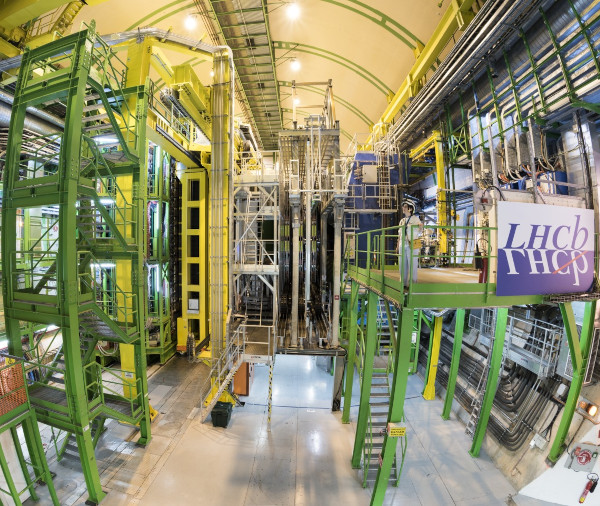
The LHCb experiment is mainly dedicated to the study of hadrons containing the heavy quarks, beauty and charm, whose decays give access to precision measurements of some of the parameters of the Standard Model. In particular, the small asymmetries between the decays of matter and antimatter (a phenomenon known as CP violation) are investigated. This process is very sensitive to possible contributions of still unknown particles. In the 2000s, the LHCb group in Florence contributed to the construction of the experiment by designing and building multi-wire chambers for the muon detector in the Sesto Fiorentino laboratories. Today the researchers are mainly engaged in physics analysis of the data collected between 2010 and 2018. They are also preparing the upgrade of the experiment, with the new detector expected to be ready in 2022.
The analysis activities focus on the indirect research of new physics in rare decays (in particular of K mesons) and on hadronic physics measurements. The studies conducted in Florence led in 2020 to the discovery of a new tetraquark-type particle, i.e. made up of four quarks, in this case presumably of two pairs of charm-anticharm quarks. This first tetraquark state composed entirely of heavy quarks could provide an important test for the theory of strong interactions, responsible for the formation of hadrons and atomic nuclei. The group also has a leadership role in the development of a program to study the collisions between LHC-accelerated protons and helium nuclei at rest, obtained by injecting gas at very low pressure into the LHC vacuum. These collisions reproduce the interactions that occur when high-energy cosmic rays (mostly protons) interact with the interstellar medium (mostly hydrogen and helium). The measure of antimatter production in these collisions is of great relevance to experiments that are measuring the antimatter component in cosmic rays in space, looking for possible traces of dark matter in the Universe.
In 2017, Giovanni Passaleva, research director at INFN Florence, was elected spokesperson of the LHCb collaboration.
Contact person: Lucio Anderlini (at) fi infn it
Sito Web: http://lhcb-public.web.cern.ch/lhcb-public
NA62
It is a fixed target experiment, on a beam line extracted from the SPS accelerator at CERN; it is dedicated to the study of K mesons and in particular to their super-rare decay, in a pion and two neutrinos. This decay probability is extremely sensitive to the virtual contribution of new particles not yet known. In the decays of the K mesons it is also possible to directly search for the production of particles of the so-called dark matter, which would allow to explain the expansion of the universe. NA62 took data in 2016, 2017 and 2018; after a two-year stop, it will again take data from the summer of 2021.
The Florence group built one of the experiment's main detectors, the RICH, based on the Cherenkov effect, to distinguish pions and muons; the Florence group deals with the functioning of this detector, its approximately 2,000 photomultipliers and associated electronics, the alignment of the mirrors to collect the Cherenkov light and the trigger of the experiment. The Florence group also deals with the analysis of the data collected by NA62, both for the super-rare decay mentioned above, and for the search for dark matter. The deputy spokesperson of NA62 is part of the Florence group.
Contact person: Francesca Bucci (at) fi infn it
Sito Web: https://na62.web.cern.ch/Home/Home.html
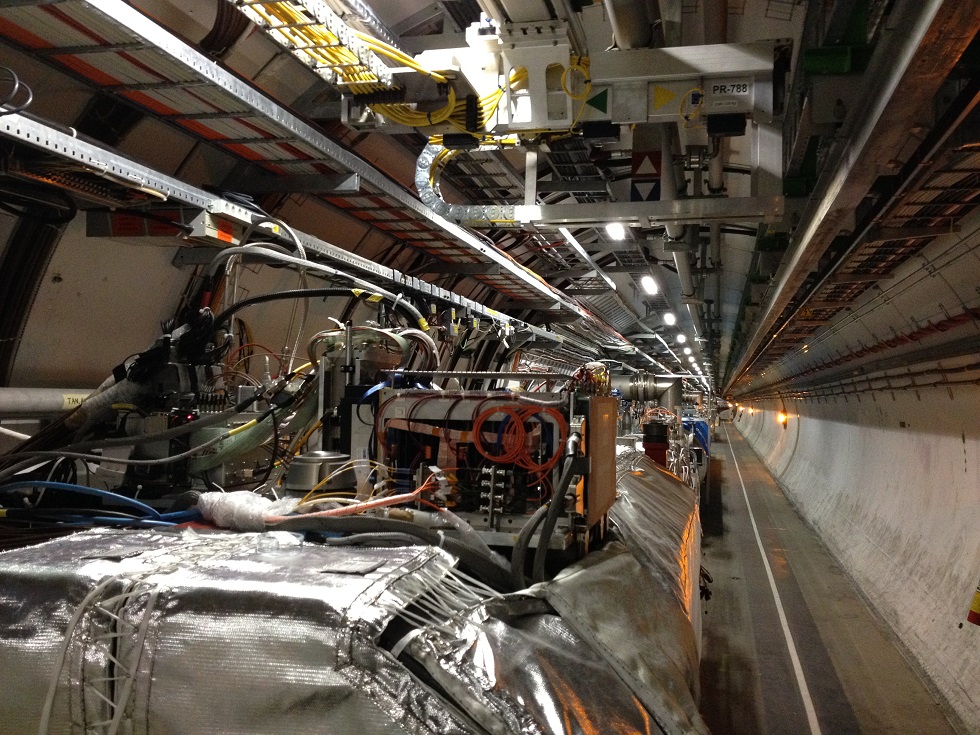
The LHC-forward experiment (LHCf) is located at CERN's Large Hadron Collider (LHC). It is composed of two independent detectors, positioned along the axis of the colliding beams, 140 meters away from the ATLAS interaction point, in opposite directions. This particular positions allow LHCf to measure the production of high-energy neutral particles emitted at small angles in the direction of the beam, such as photons, neutrons and neutral pions.
The scientific aim of LHCf is to provide fundamental measures for the improvement of hadronic interaction models used in simulations of the interaction of high-energy cosmic rays with the atmosphere (which produce the so-called atmospheric showers of secondary particles). The predictions of the different models highlight significant discrepancies among them, particularly in the small angle region, where most of the flux of atmospheric showers is concentrated. Experimental LHCf data, acquired at the highest energy available for an accelerator, provide a unique opportunity for calibration of hadronic interaction models. This allows to reduce the uncertainty on the measurements of very high energy cosmic rays, possible only through the observation of the atmospheric showers they produce.
The Florentine component of the LHCf experiment is predominant and played a decisive role in the design of the detector, in the preparation and execution of the data taking and in the analysis of the experimental results. In view of the 14 TeV proton-proton collision operations at LHC, the development of a new reading electronics of silicon microstrip detectors is underway in Florence. In parallel, the work of analyzing the data acquired in proton-proton collisions at 13 TeV and proton-lead at 8.16 TeV continues.
Contact person: Lorenzo Bonechi (at) fi infn it
Sito Web: http://hep.fi.infn.it/LHCf
ASTROPARTICLE PHYSICS
Cosmic radiation
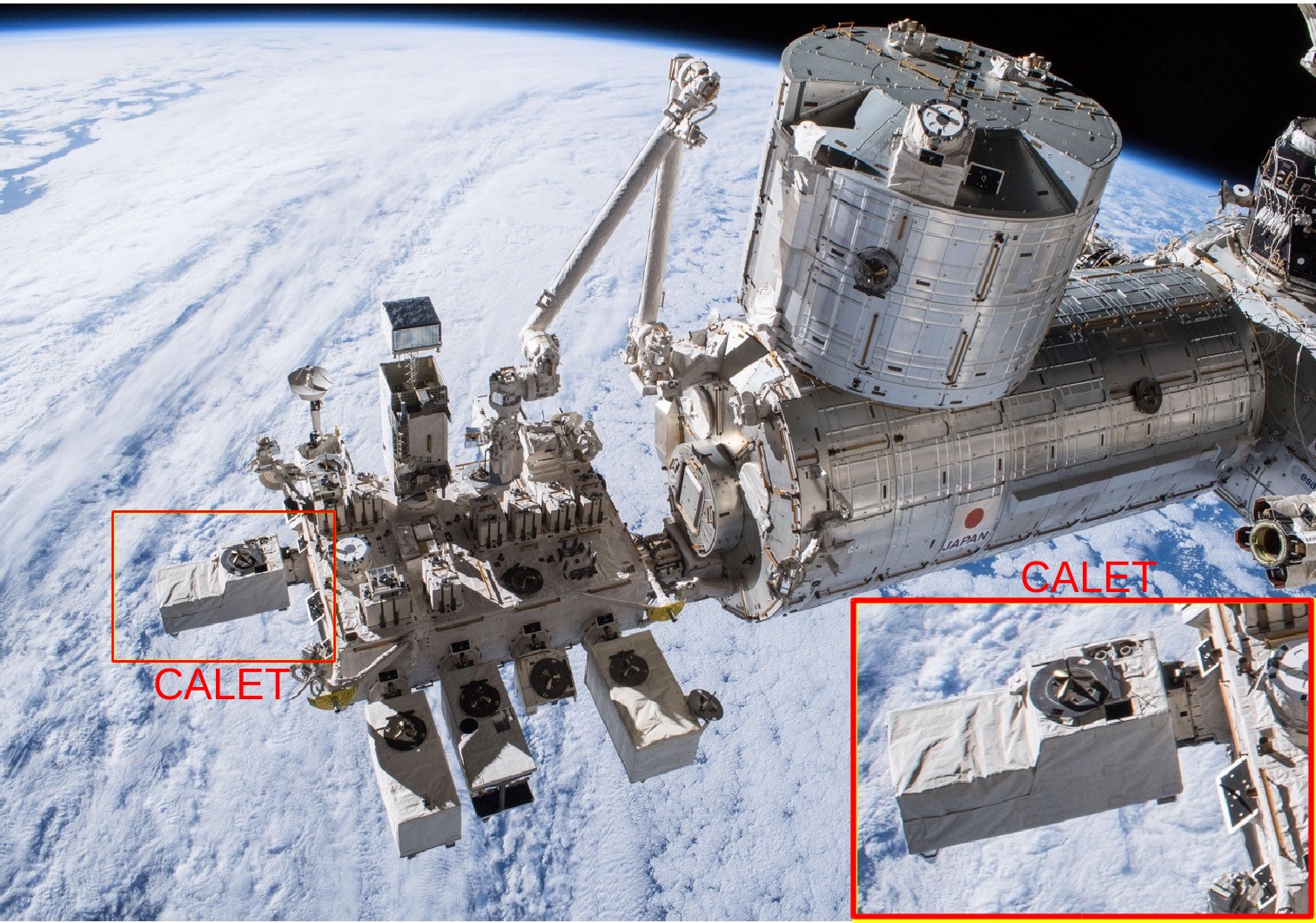
The CALET (CALorimetric Electron Telescope) experiment is the result of an international collaboration involving several research institutes in Italy, Japan and United States. The detector consists of an instrument dedicated to the direct measurement of cosmic rays, installed aboard the International Space Station on August 19, 2015 and still operating. The experiment was carefully developed using high-energy calorimetry techniques, so that for each incident particle it is possible to reconstruct the energy, the direction and the nature of the particle itself (electron, proton, photon, ...).
The main objective of the experiment is the measurement of the flux of electrons and positrons up to an energy of a few TeVs, in order to improve our knowledge on the acceleration and propagation models of cosmic rays. In particular, the extension of the measurement to such high energies is fundamental to determine the contribution to the flux due to local astrophysical objects (such as the supernova remnant in the constellation Vela) and the possible contribution linked to non-ordinary sources (due for example to the annihilation of dark matter). In addition to electrons and positrons, the instrument is capable to provide accurate measurements of the fluxes of protons and high-energy nuclei (equally essential for the understanding of the origin of cosmic rays) and of the gamma component (also thanks to the use of the auxiliary Gamma-Ray Burst Monitor). Given the technical characteristics and instrument performance, the detector is inserted in an international network of experiments to perform multi-messenger astronomy observations.
The Florence research group is one of the two groups involved in the analysis related to the main scientific objective of the experiment: the measurement of the flux of electrons and positrons. For this goal, our group has developed an analysis strategy that we are continuously improving: by making the best of the instrument performance and the statistics available, it is possible to extend the measurement up to an energy of a few TeVs. The measurement of the flux has recently been accompanied by that of anisotropy, with the aim of providing more information on the contribution from local sources to high energies.
Contact person:Oscar Adriani (at) unifi it
Sito Web: http://calet.pi.infn.it/
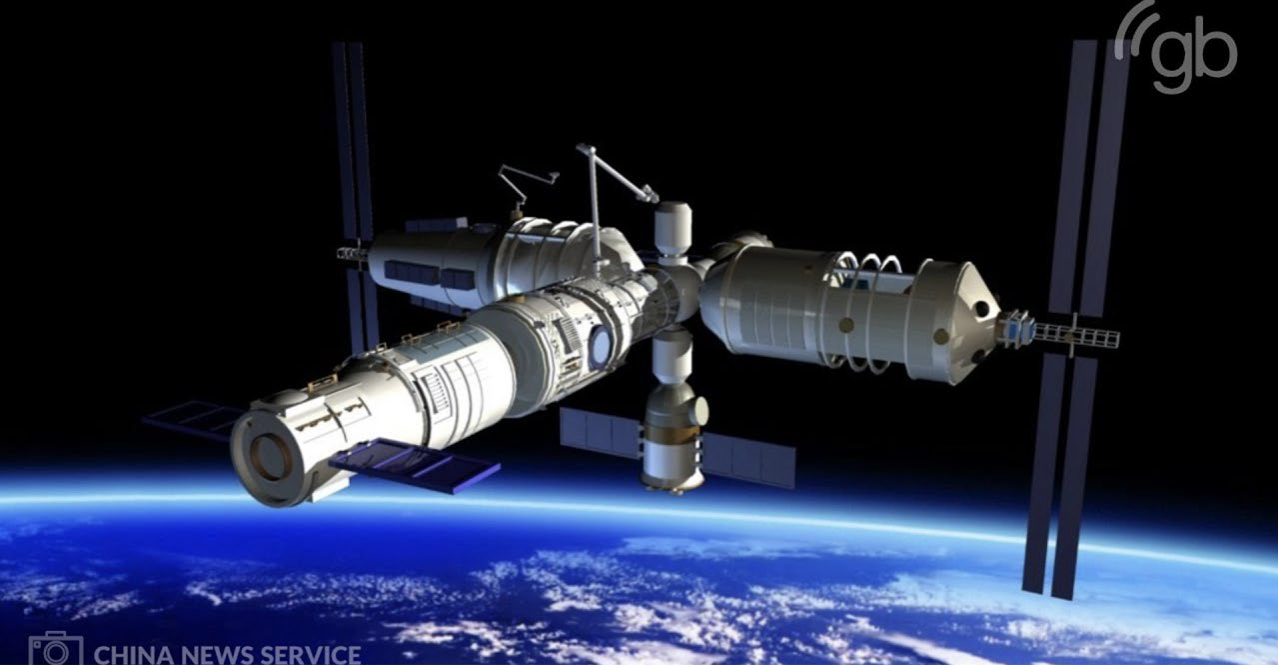
The HERD (High Energy Cosmic Radiation Detection) experiment is the result of an international collaboration involving various research institutes in China, Italy, Switzerland and Spain. The detector will perform direct measurements of cosmic and gamma rays at high energy aboard the Chinese Space Station, currently under construction. The experiment has been designed using an innovative technique of high-energy calorimetry, developed in Florence in collaboration with other Italian institutes, which will allow to extend the direct measurement to energies higher than those currently achieved.
The main objective of the experiment is to measure the flux of the nuclear component of cosmic rays up to an energy of some PeVs. In fact, at these energies, the total flux of cosmic rays undergoes a significant attenuation, which is believed to represent the energy limit of the Galactic sources. An accurate direct measurement of the energy spectrum of the individual elements, never carried out to date, represents an essential step for understanding the acceleration and propagation mechanisms within our Galaxy. The experiment will also perform accurate measurements of the flow of electrons and gamma rays, providing data that could potentially highlight contributions from new sources of ordinary and non-ordinary astrophysical nature, such as dark matter.
The Florence group is actively involved in the design of the calorimeter and in the development of the simulation and data analysis code.
Contact person: Nicola Mori (at) fi infn it
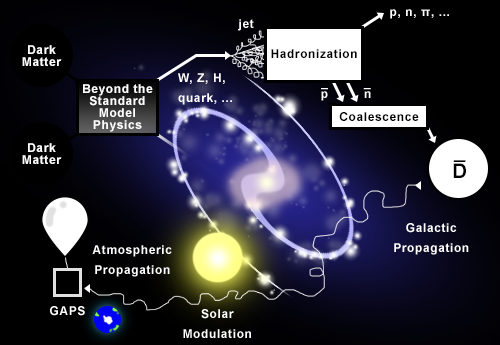
The GAPS (General Anti-Particle Spectrometer) experiment, result of a collaboration between the United States, Italy and Japan, was designed for the study of physical processes for the production of antiparticles (antiprotons, antideuterium and antihelium) in cosmic rays, with the aim to highlight possible signatures of the presence of dark matter confined in the galactic halo. The detection technique is innovative and is based on the capture of the low-energy antiparticle in the electric field of the nucleus, which leads to the formation of an exotic atom in an excited state. When the atom de-excites, it emits a photon in the X-ray spectrum. Shortly after the emission, following the annihilation of the antimatter particle with the medium nuclei, the instrument measures the energy deposits of pions and protons produced in the annihilation mechanism.
The project was approved by NASA for a first balloon flight in Antarctica scheduled for the Austral summer 2022/2023. The Florence group is responsible for the development of the experiment reconstruction code and is actively engaged in simulation and data analysis.
Contact person: Elena Vannuccini (at) fi infn it
Sito Web: http://gamma0.astro.ucla.edu/gaps/
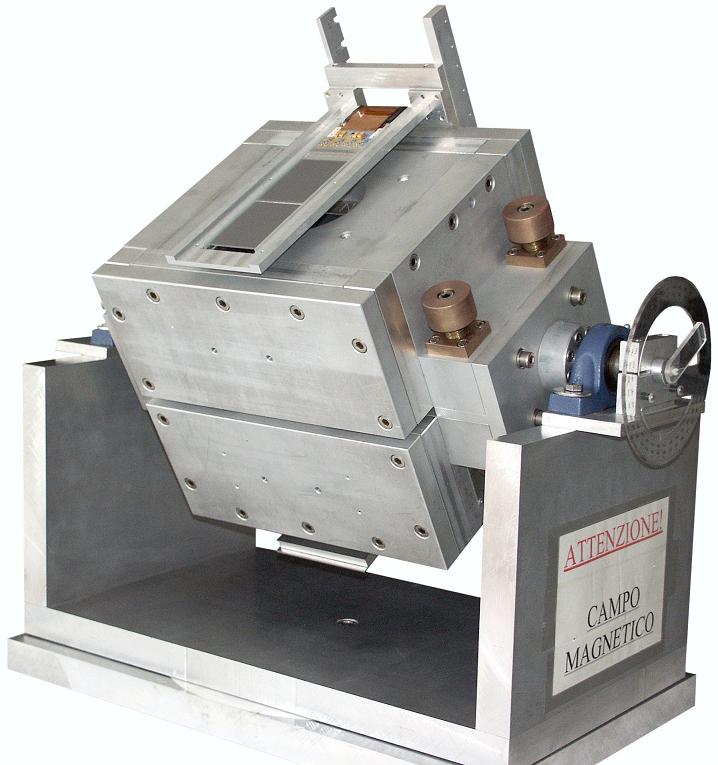
ADAMO is a magnetic spectrometer born as a prototype of the spectrometer of the PAMELA experiment. The PAMELA experiment, which officially ended in 2017, was designed with the specific purpose of making accurate measurements of the high-energy antimatter component in cosmic rays; for this purpose it was equipped with a magnetic spectrometer consisting of a permanent magnet and latest generation silicon micro-strip detectors. PAMELA has conducted measurements of the spectrum of antiprotons and positrons in cosmic rays which have led to the discovery of an excess of positron whose origin has not yet been clarified.
ADAMO, which uses the same technology as PAMELA but on a smaller scale, is still operational and is able to make precise measurements of the flux of atmospheric muons on the ground with a pulse between 0.1 GeV/c and 150 GeV/c. The apparatus can be easily rotated to carry out measurements at different zenith angles: this is particularly important both to have a reference spectrum for different applications (such as the muon radiography technique) and to compare the data with the predictions of the simulations of the "atmospheric showers" induced by the interaction of a cosmic ray with the earth's atmosphere. Furthermore, the flux of muons in the atmosphere is closely related to the flux of muon neutrinos, since muons are mainly produced by the decays of charged pions.
ADAMO is also used by students of the master's degree course in Physical and Astrophysical Sciences in the laboratory sessions of the Nuclear-Subnuclear Laboratory II course.
Contact person: Lorenzo Bonechi (at) fi infn it
Sito Web: http://hep.fi.infn.it/ADAMO
Gravitational waves, general and quantum physics

LISA (Laser Interferometer Space Antenna) is the first ESA space interferometer for gravitational wave detection in space in the range 10-4 - 10-1 Hz prohibited for the Earth interferometers. This mission consists of three spacecrafts placed at the corners of an equilateral triangle of 2.5 million km side. The sides of the triangle represent the arms of the interferometer. The LISA spacecraft constellation will orbit the Sun on the ecliptic, 50 million km behind Earth. LISA will allow us to open a window on the Gravitational Universe in addition to electromagnetic observations. The main scientific goals of LISA are the detection of gravitational waves generated by compact binary systems and the merging of supermassive black holes.
The LISA Pathfinder mission consisted of one satellite orbiting around the L1 Lagrangian point in 2016-2017. LISA Pathfinder has allowed us to test the instrumentation that will be placed on board LISA and to estimate the spurious accelerations on two free falling test masses that constitute the mirrors of the interferometer at 1.5 million km from Earth.
Contact person: Catia Grimani (at) uniurb.it
Sito Web: https://www.elisascience.org/
VIRGO
Virgo is a ground-based interferometer with 3 km arms, developed to detect gravitational waves; recently it was inserted in a global network of interferometers that includes the LIGO interferometers located in the United States, which first detected gravitational waves in 2016.
Virgo, located in Cascina near Pisa on the site of the European Gravitational Observatory (EGO), revealed, together with the LIGO interferometers, gravitational waves from binary systems of black holes and neutron stars.
Gravitational waves cross spacetime deforming it and producing mini spacetime-motions. In this distorted space-time, material bodies are also deformed and distances alternately lengthen and shorten. If a gravitational wave passes through Virgo, it is estimated that the length of its 3 km arms varies by one billionth of a billionth of a meter, less than one thousandth of the radius of a proton. A very small effect, which however testifies to a violent astrophysical event that took place thousands of light-years from us!
Contact person: Massimo Lenti (massimo.lenti (at) unifi.it)
Sito Web: http://public.virgo-gw.eu; virgo.uniurb.it
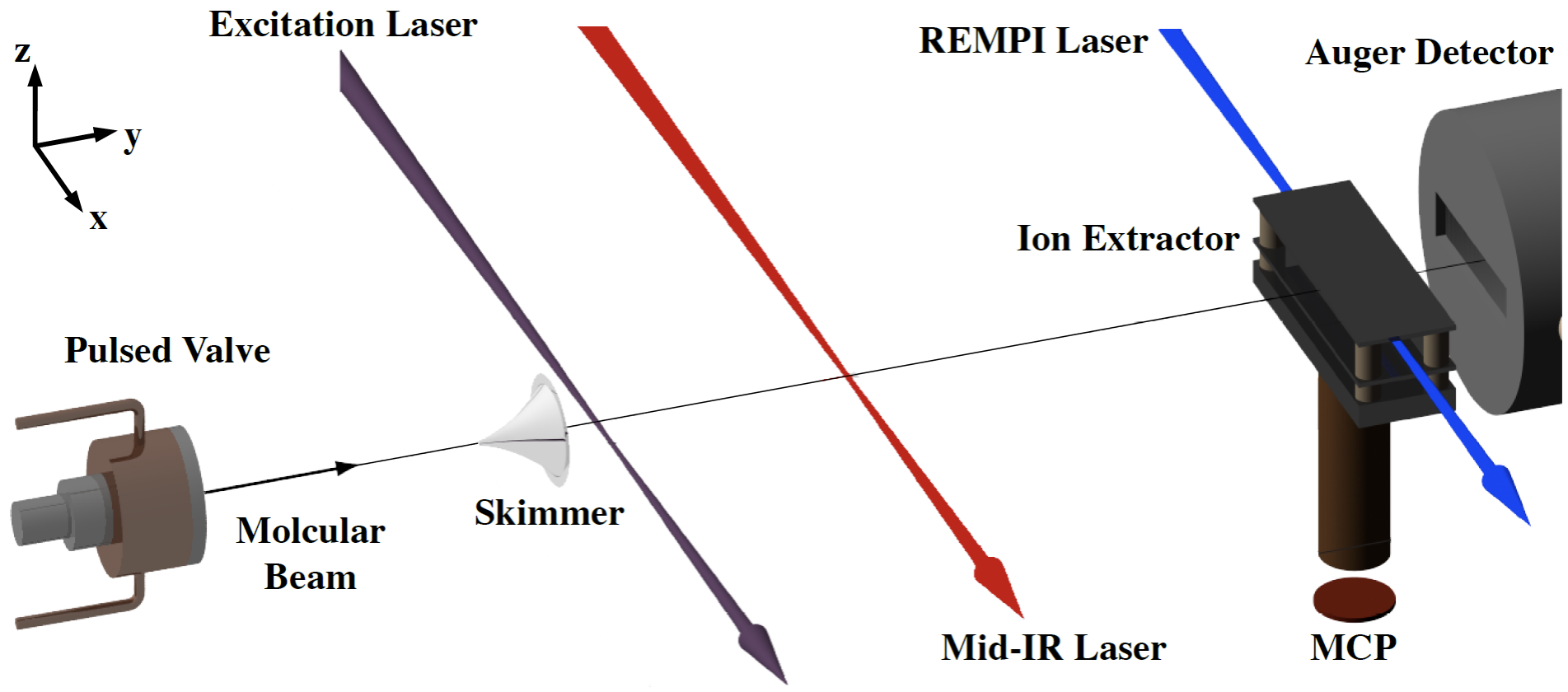
Beams of stable and cold molecules are spectroscopically interrogated by infrared lasers referring to the primary Cesium standard, in order to explore physics beyond the Standard Model. Through ultra-precise spectroscopic measurements, variations in the fundamental constants (ratio between the mass of the proton and the electron) and effects of violation of parity in the molecules are investigated.
Contact person: Simone Borri (at) fi infn it
Sito Web: https://web.infn.it/supremo/
NUCLEAR PHYSICS
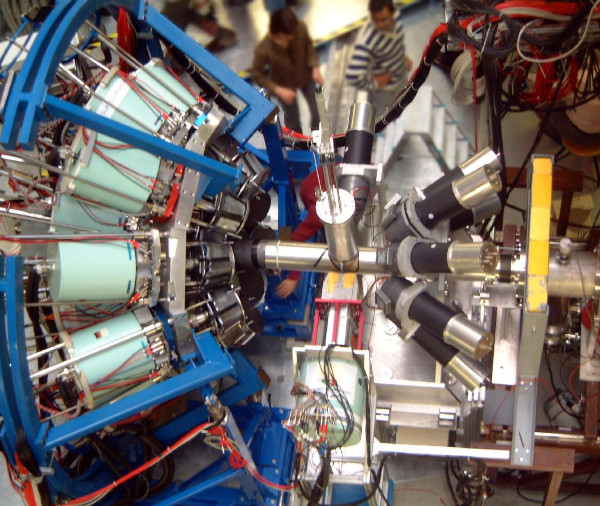
Experimental research activities in Nuclear Physics are carried out in close collaboration with researchers from the local section of the National Institute for Nuclear Physics (INFN), in the framework of national and international collaborations. Such activities focus on the collisions of ions at intermediate and low beam energies, aiming at studying the dynamics of nuclear reactions, the cluster structure in nuclei and at the characterization of exotic nuclei in view of the construction of the SPES accelerator (Selective Production of Exotic Species) at the LNL. The main experimental techniques consist of the detection of charged products, gamma spectroscopy and and conversion electron measurement. The experiments are carried on in many national and international labs, such as LNL, Legnaro National Laboratories, LNS, Southern National Laboratories, CERN (Geneva, CH) and GANIL (Caen, FR) in Europe.
More details are available at this address .
TECHNOLOGICAL AND APPLIED RESEARCH
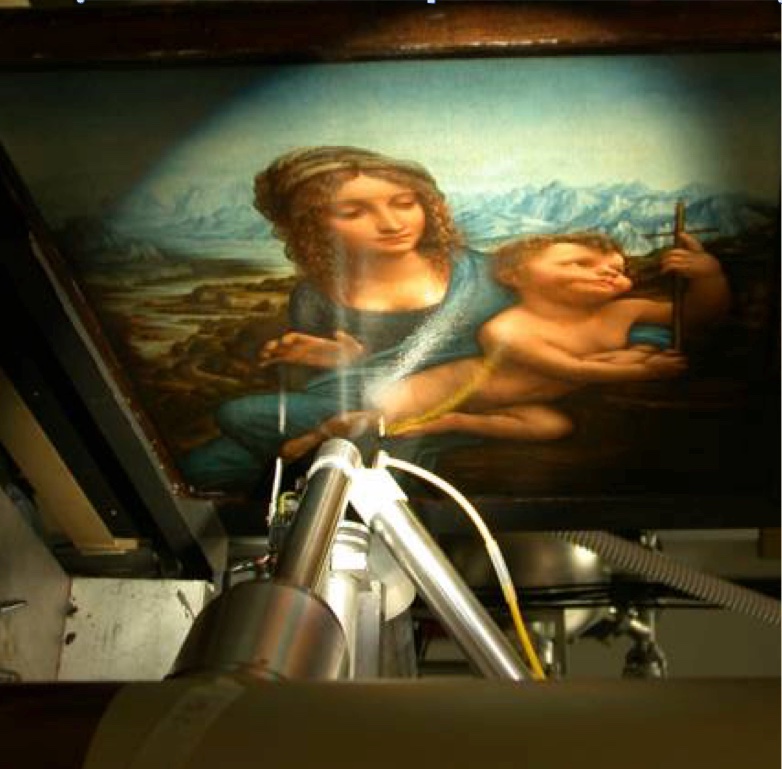
In the field of technological and applied research, there are various lines of research, including muon radiography (MURAVES and MIMA) and the activities carried out at the LABEC (Laboratory of nuclear techniques for the Environment and Cultural Heritage), which has a accelerator for non-invasive precision measurements, such as composition analysis of materials with accelerated beams (IBA, Ion Beam Analysis) and dating with the radiocarbon method by mass spectroscopy (AMS, Accelerator Mass Spectrometry).
Last update
22.09.2021
